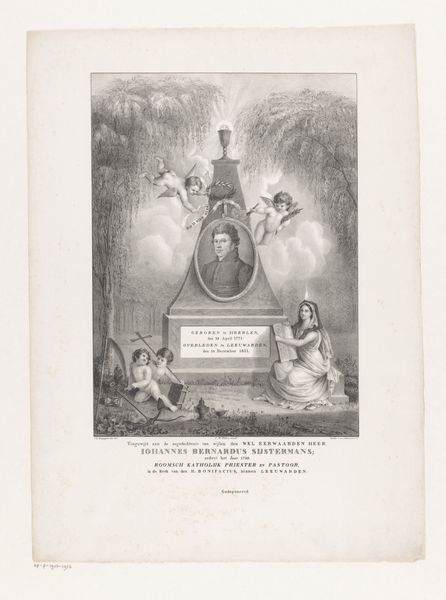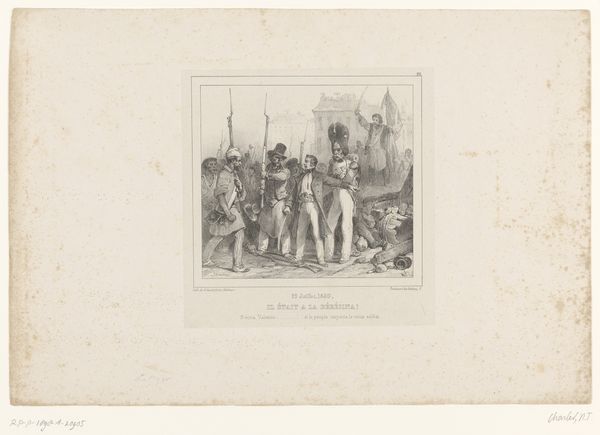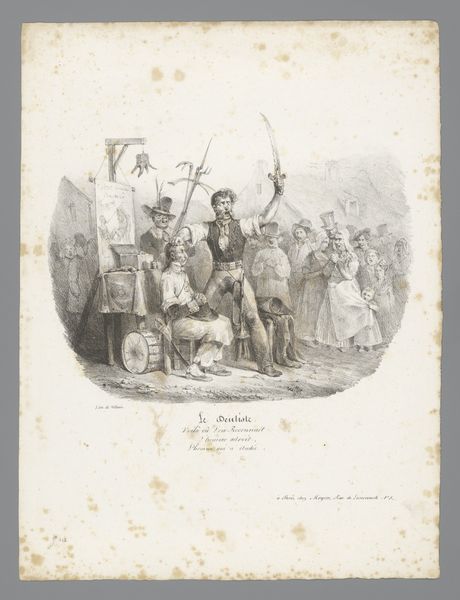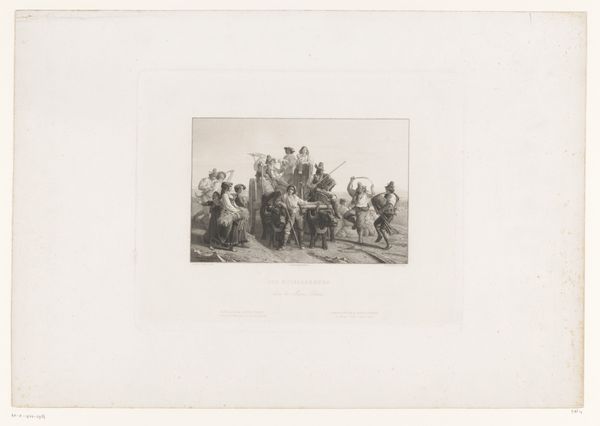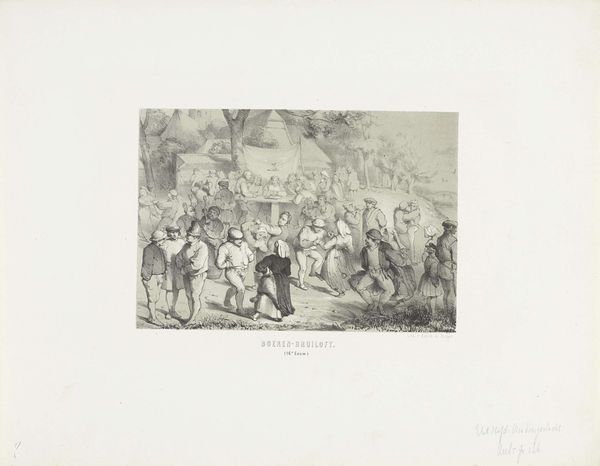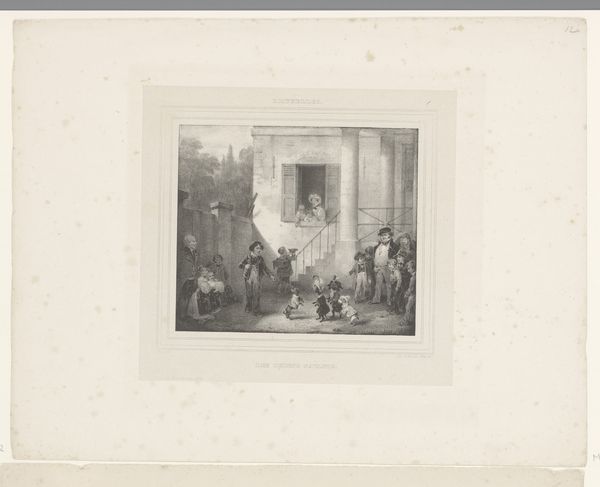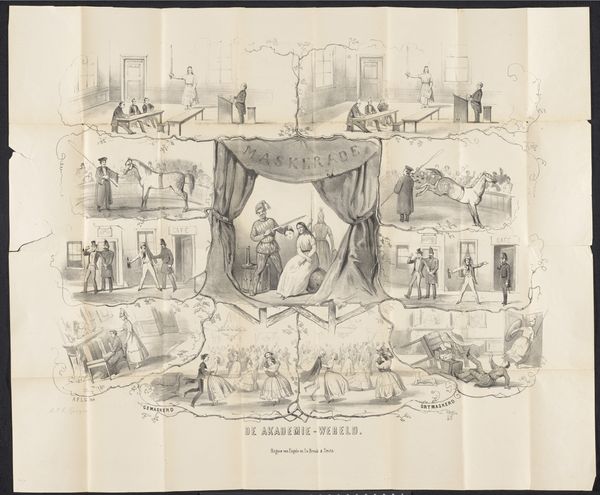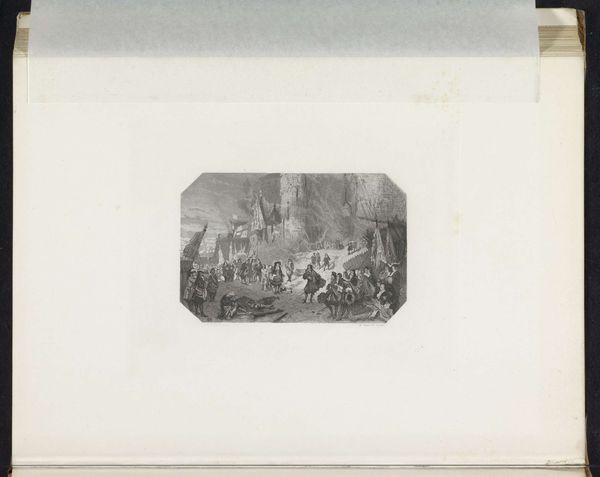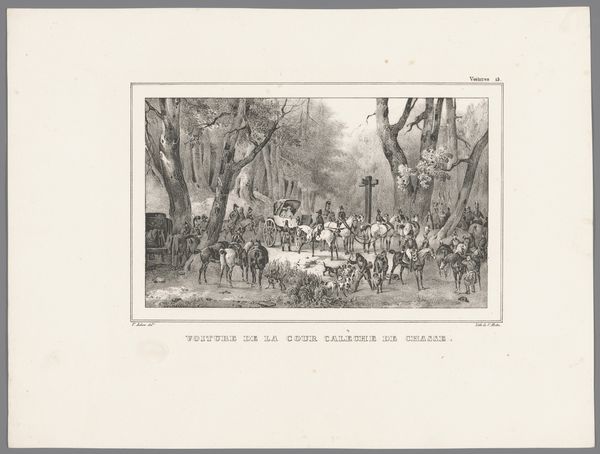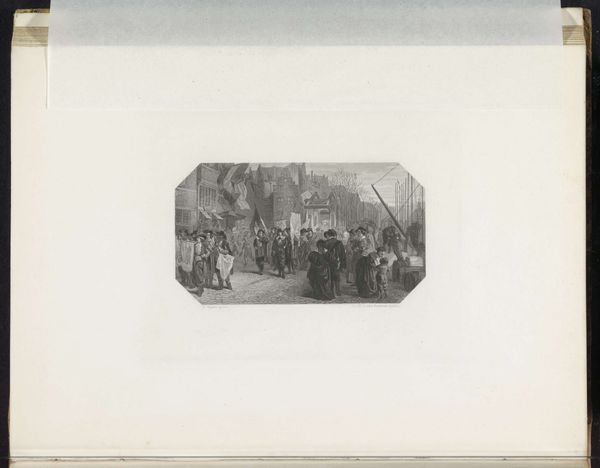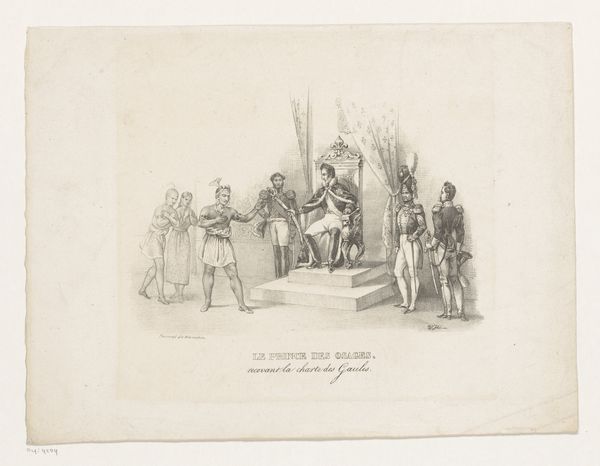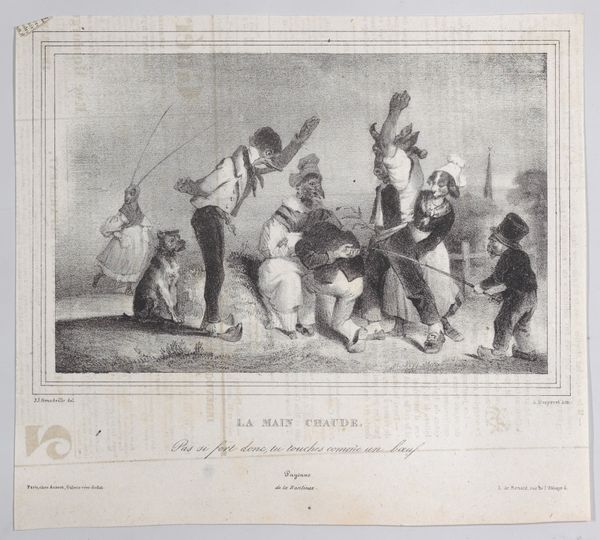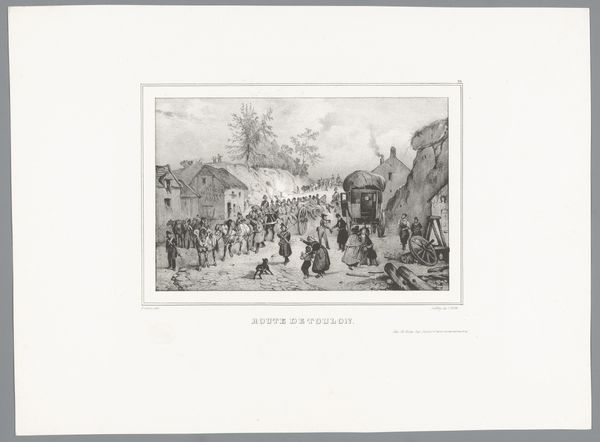
drawing, print, engraving
#
drawing
# print
#
figuration
#
history-painting
#
engraving
Dimensions: height 264 mm, width 346 mm
Copyright: Rijks Museum: Open Domain
Editor: This engraving, titled "The Coronation of Inês de Castro," by Charles Rochussen, made sometime between 1850 and 1857…it's so detailed! It depicts this very dramatic historical scene, but what strikes me is how many figures Rochussen fit into one print. What catches your eye about this piece? Curator: Looking at the material execution, the dense crosshatching of the engraving allowed for the detailed replication and wide distribution of this dramatic historical narrative. Engravings like these were often based on paintings, but their proliferation speaks to the increasing commodification and consumption of art during the 19th century. This process democratized imagery, making history accessible but also shaping public perception through reproduction. Editor: So, the very act of creating and distributing it…that's part of the point? How so? Curator: Precisely. The labor-intensive engraving process, combined with printmaking technology, created an accessible visual commodity for the rising middle class. Consider how this engraving, as a reproducible image, functions within the marketplace of ideas. Did this affordability and distribution contribute to shaping public sentiment surrounding the historical narrative it depicts? And what kind of sentiment does it communicate to a consumer in that era? Editor: I guess it's less about the artist's sole vision and more about how images become part of a wider social fabric through production. That’s interesting to consider. Curator: Exactly. Thinking about its original function in relation to its materials reveals how art can operate beyond aesthetic contemplation. The engraving here reveals how history, artistry, and commerce were deeply entangled during the period. Editor: So, analyzing the material and the means of production gives us insight beyond just the story it portrays. Thanks for pointing that out. Curator: My pleasure! Analyzing art this way makes us think about how we still consume images today and what it means for those images.
Comments
No comments
Be the first to comment and join the conversation on the ultimate creative platform.
